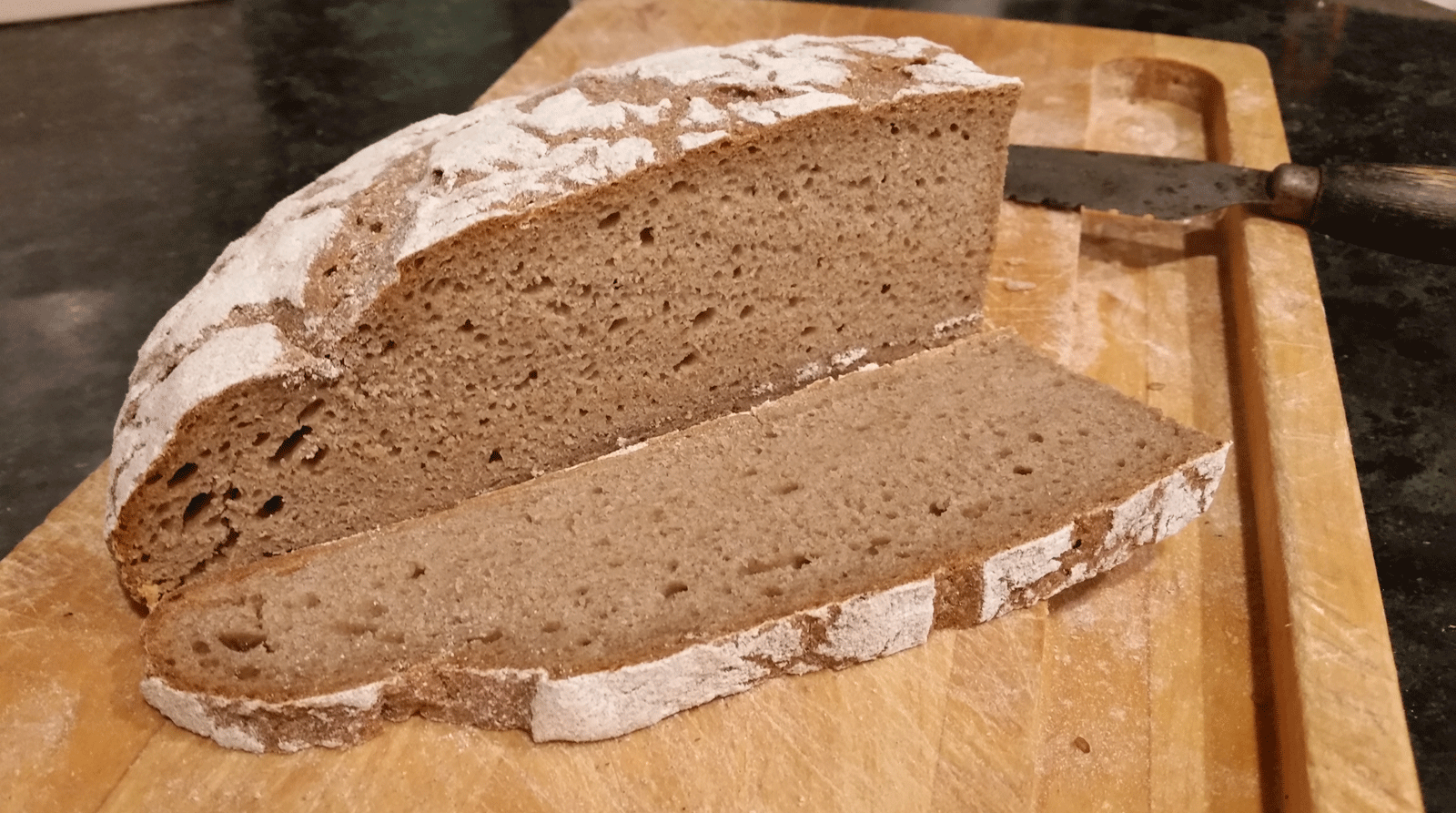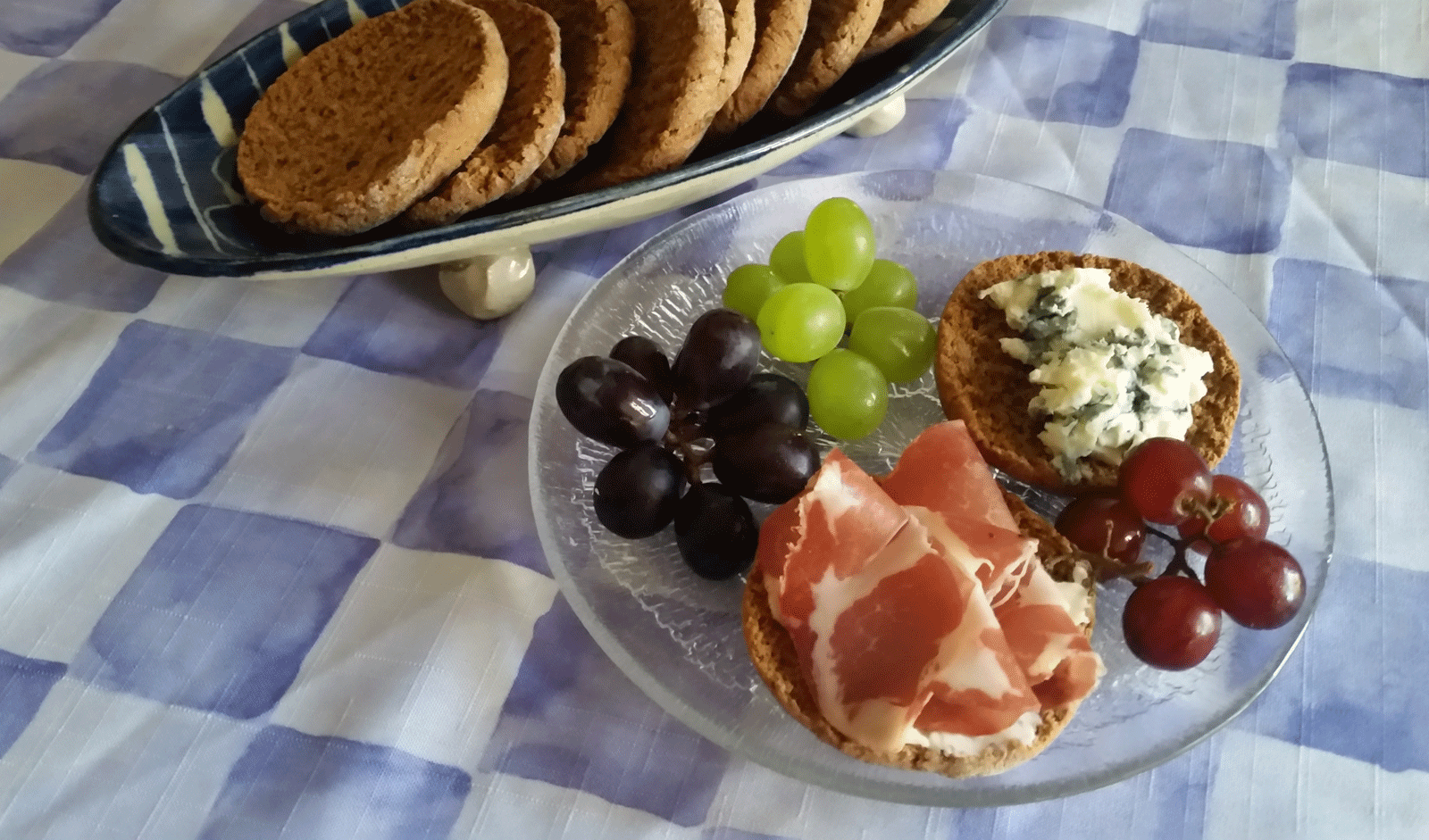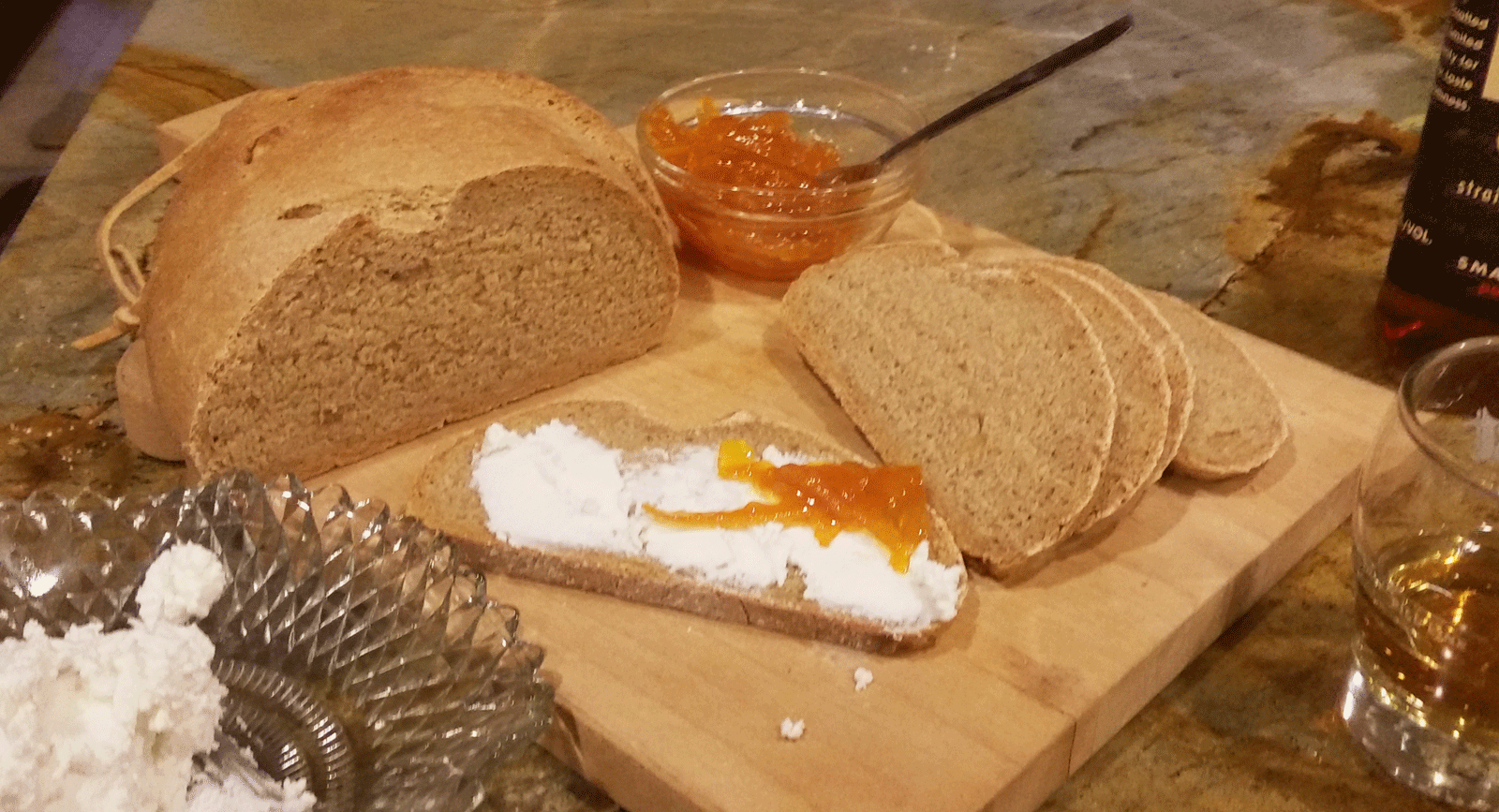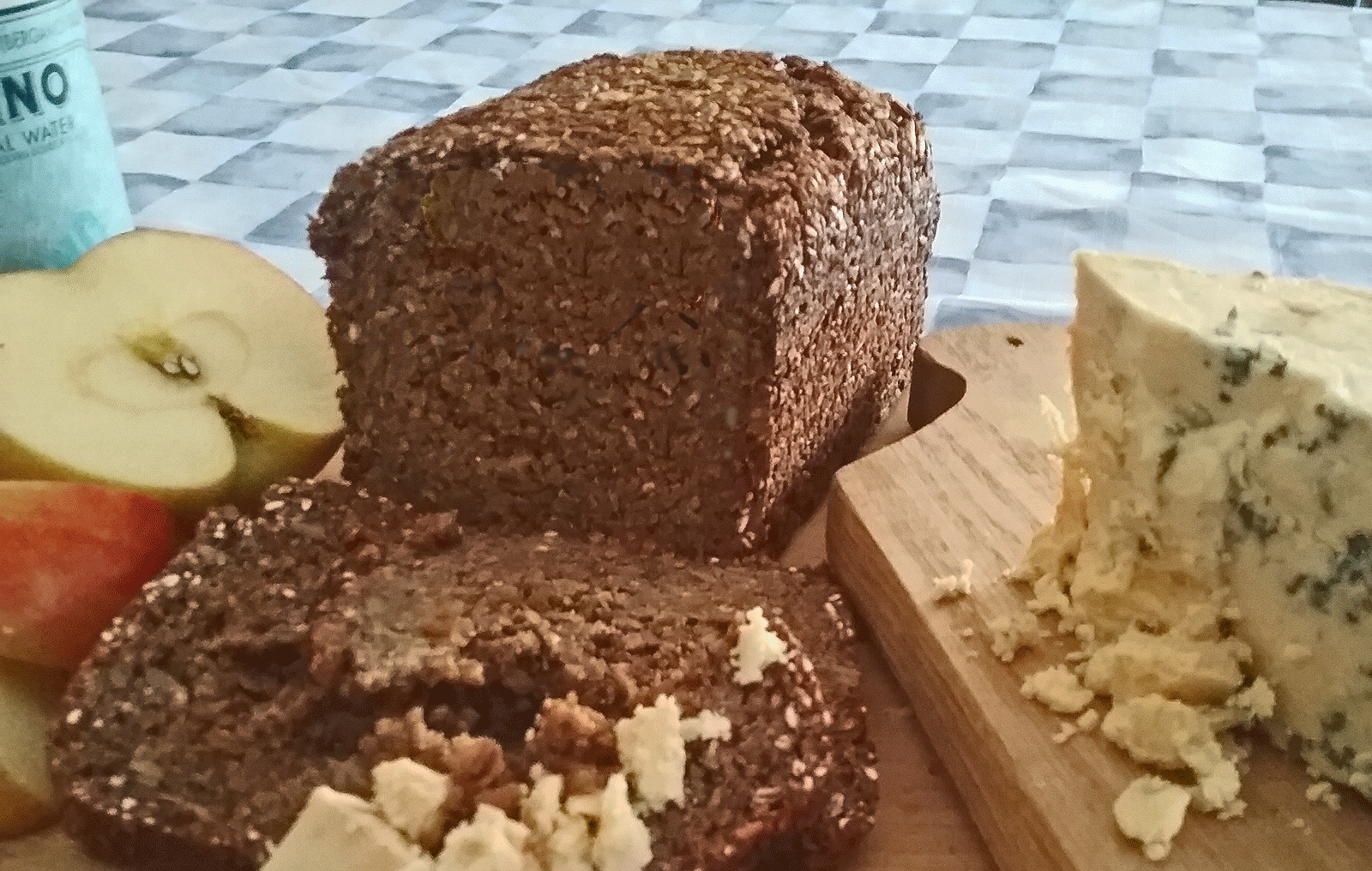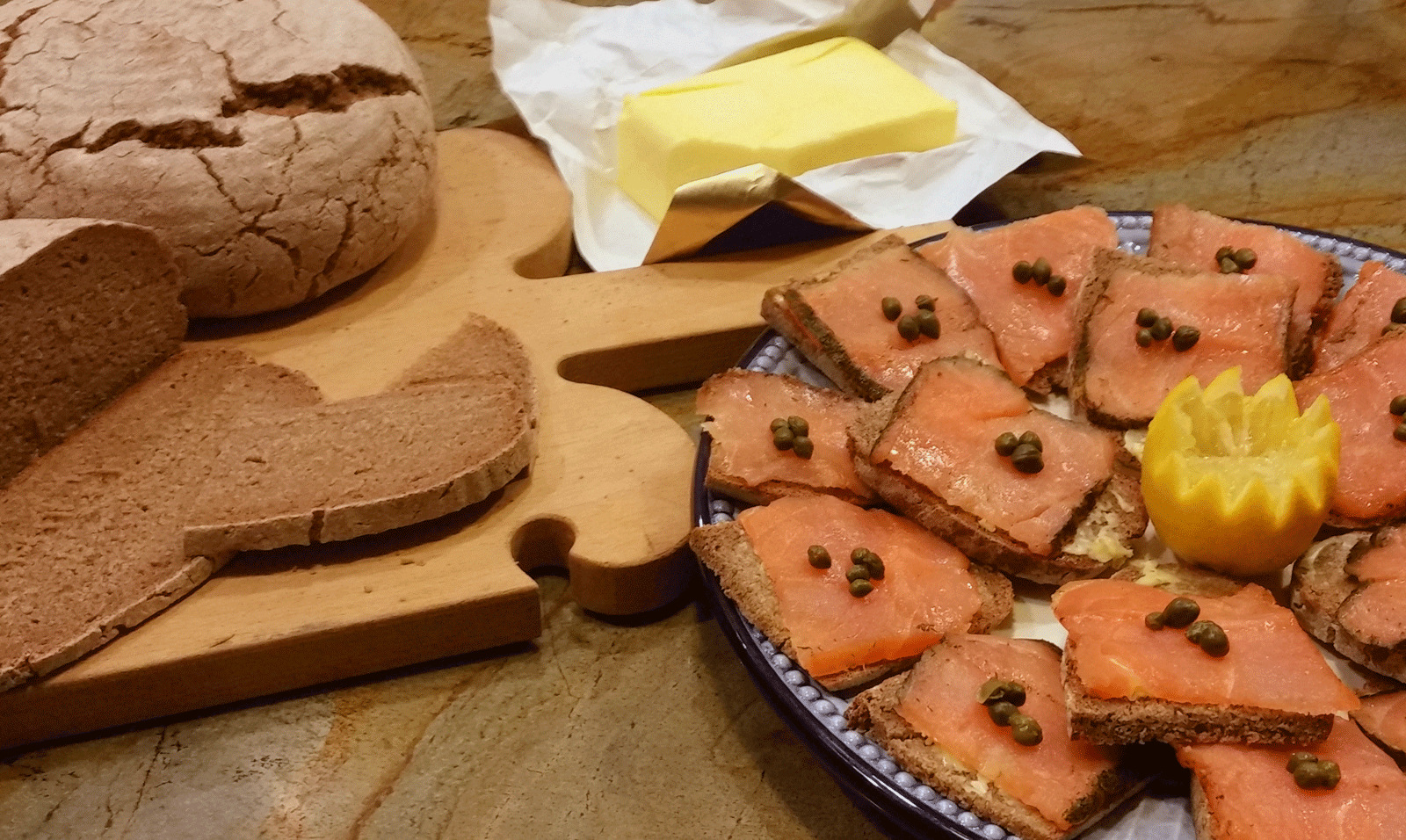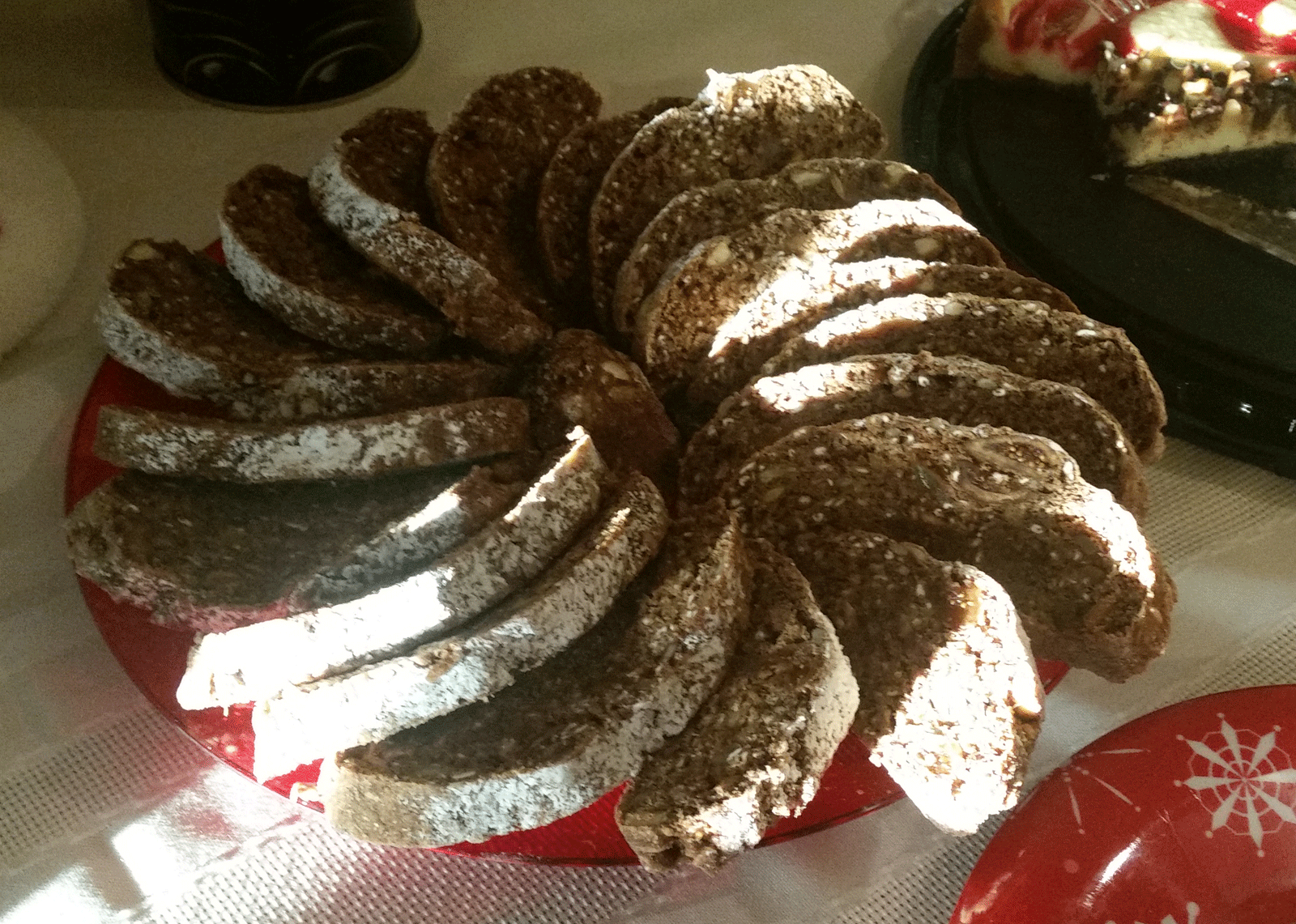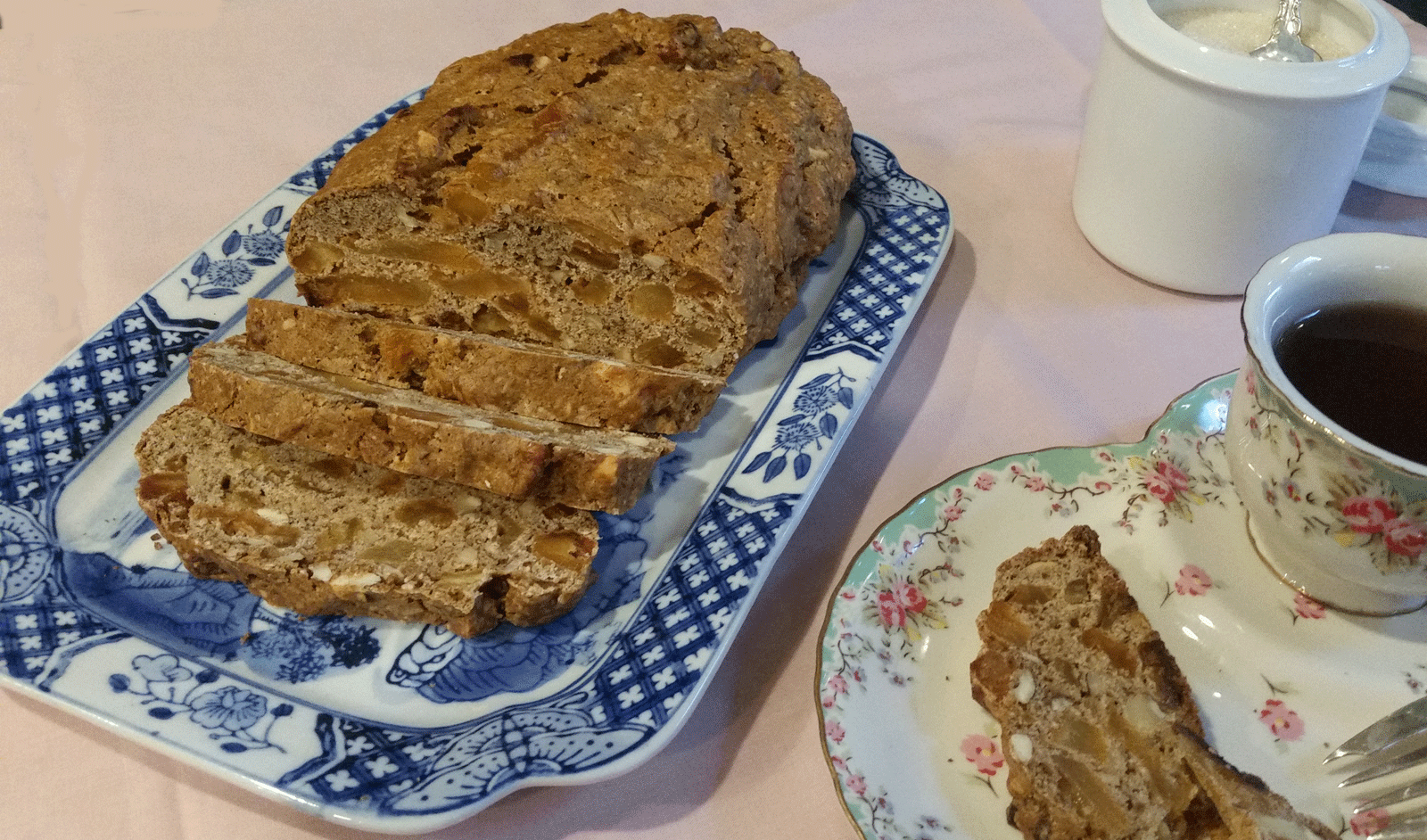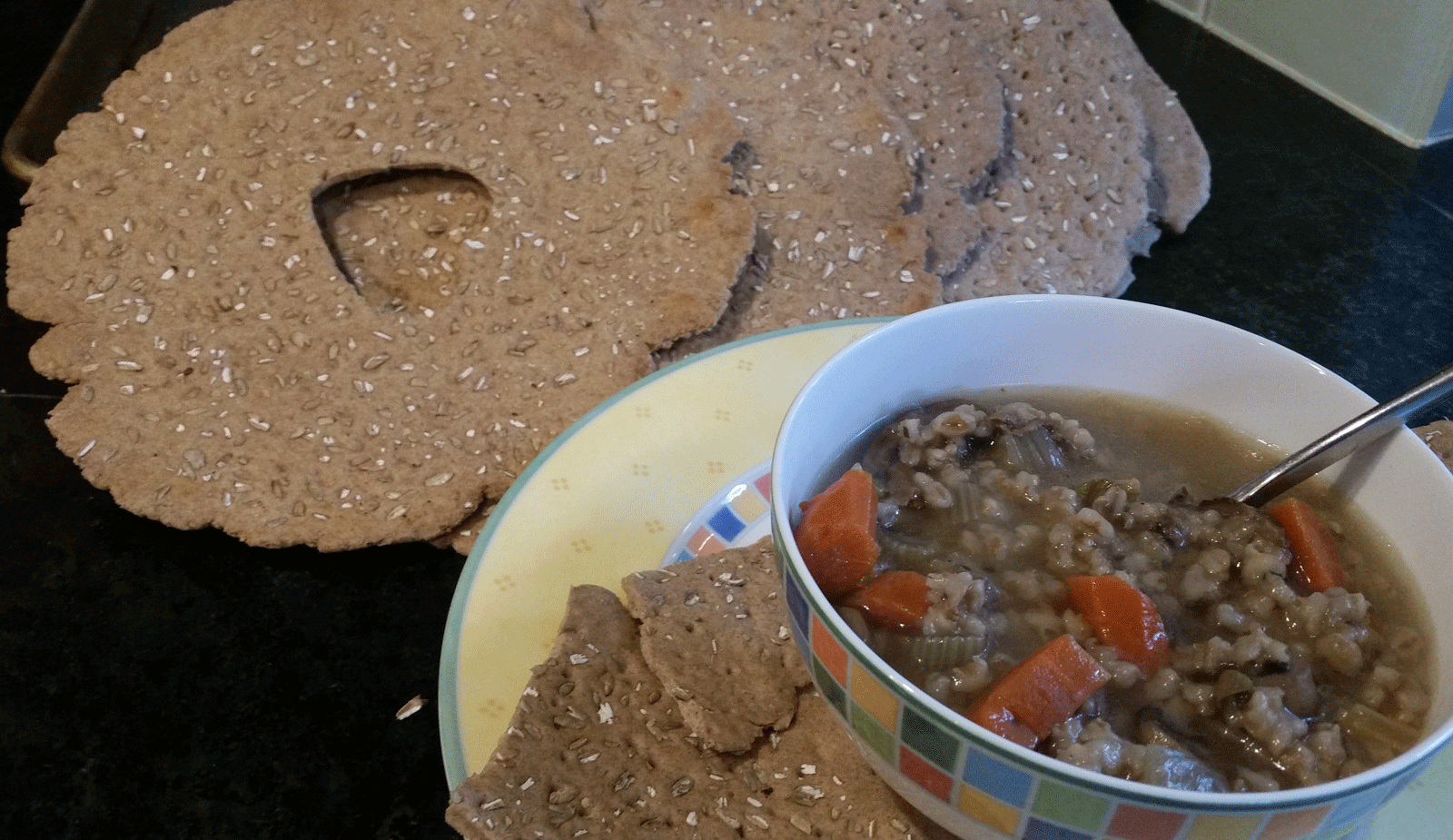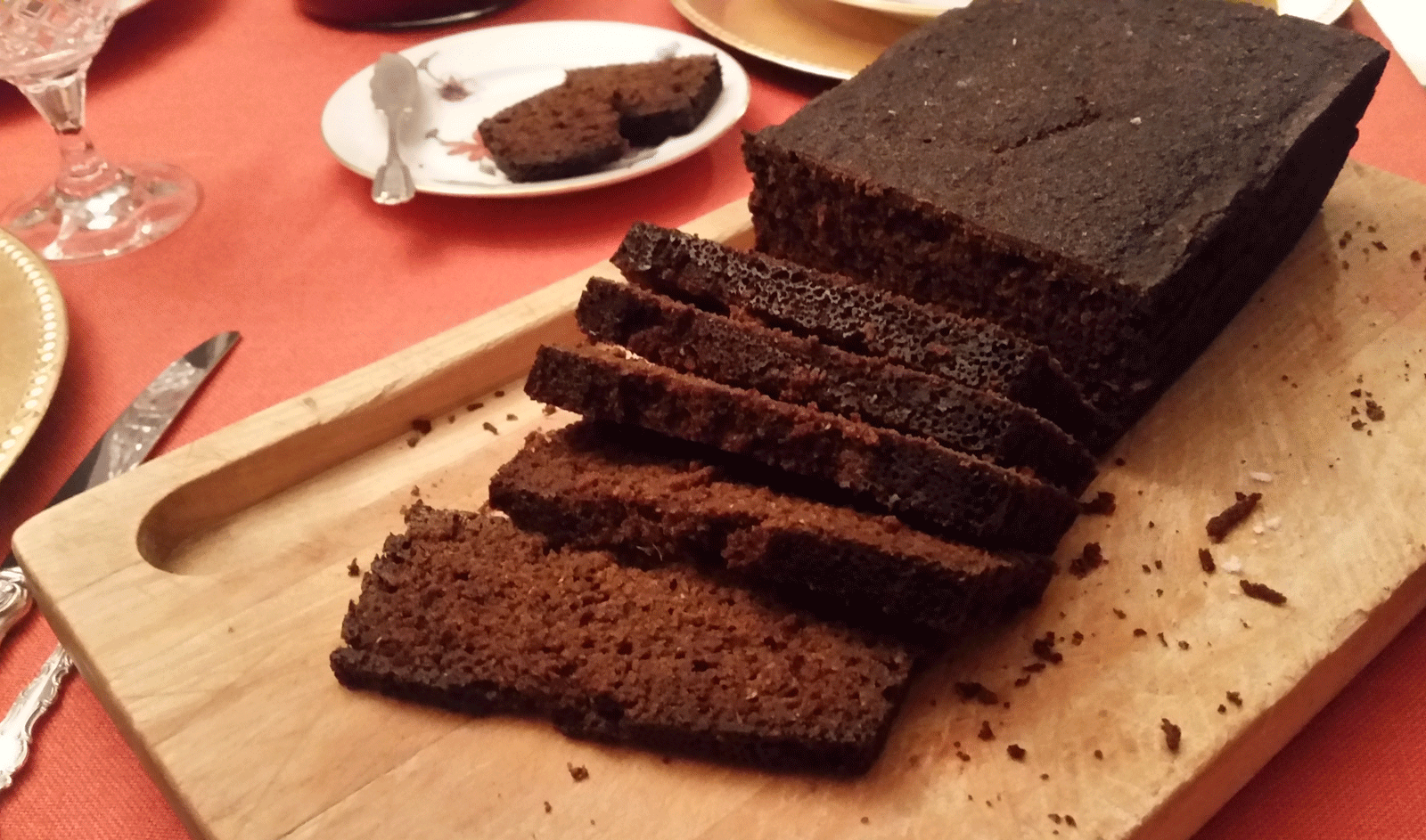| Rye %: | 100% |
| Stages: | Stage 1 sponge, Stage 2 sponge, Final dough |
| Leaven: | Rye sour culture |
| Start to Finish: | 14-16 hours |
| Hands-on Time: | 25-30 minutes |
| Yield: | Two 1¾ lb/800 g loaves |
A couple of months ago, I posted a recipe for this Auvergne classic that used both a rye sour sponge and a yeasted rye sponge. Then I came across a video from the École internationale de boulangerie for this same bread, but built on a sour sponge only. Of course, me being me, I had to bake it as well – both for my own curiosity and also because I was teaching a rye baking workshop for the Bread Bakers Guild of America and needed about 2 lb/900g of stale rye bread, which I didn’t have on hand. This bread, being 100% rye and devoid of flavoring agents outside of salt, was the perfect candidate for staling (with enough left over for comparison tasting with my earlier loaf).

